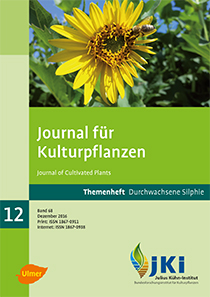Seed morphology, germination process, seed processing and assessment of the viability of Silphium perfoliatum L. seeds
Keywords:
Crop establishment, cup plant, seed treatment, seed quality, tetrazolium testAbstract
The interest in the promising perennial bioenergy crop Silphium perfoliatum L. to be used as a feedstock for biogas production in Europe is increasing. To expand the area under cultivation, high-quality seeds for stand establishment by sowing are needed, to guarantee a complete and rapid field emergence. Seed processing and defining the seed quality are current research topics. The ripening of the infructescence occurs irregularly and over an extended period due to the constant new formation of flowers, resulting in the harvesting of ripe, unripe and sterile seeds. The goals of this work were to describe the ripe seed as well as the germination process of Silphium perfoliatum L., to develop a reproducible method for seed processing and to adapt a tetrazolium test to define the viability of the seeds.
Characteristic for Silphium perfoliatum L. are the flatly-shaped achenes with its attached chaff, which germinate epigeally by lifting two cotyledons above ground. Seed quality was increased by using a sieving machine with different sieves as well as a gravity separator. The processed seeds had a viability of 97.5%, as determined by the newly developed tetrazolium test method.
DOI: 10.1399/JfK.2016.12.03, https://doi.org/10.1399/JfK.2016.12.03








